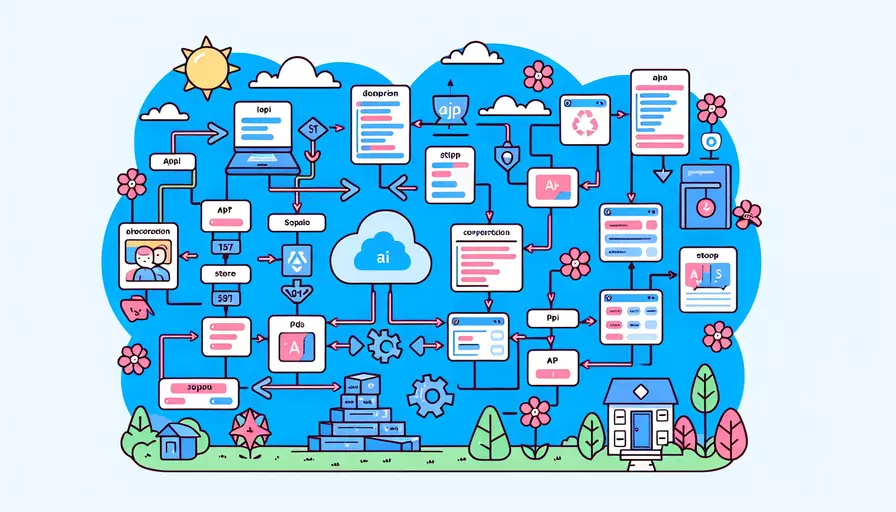
在Vue中调用接口主要有1、使用Axios库、2、使用Fetch API两种方式。这些方式可以帮助开发者轻松地实现与后端服务器的通信。下面将详细介绍这两种方法,并提供具体示例和相关背景信息,帮助您更好地理解和应用这些技术。
一、使用Axios库
Axios是一个基于Promise的HTTP客户端,可以在浏览器和Node.js中使用。它提供了简单易用的API,使得发送HTTP请求变得非常方便。
1、安装Axios:
在Vue项目中使用Axios,首先需要安装它。可以通过npm或yarn来安装。
npm install axios
或者
yarn add axios
2、在Vue组件中使用Axios:
在Vue组件中引入并使用Axios来发送HTTP请求。例如,在mounted生命周期钩子中发送请求:
<template>
<div>
<h1>数据列表</h1>
<ul>
<li v-for="item in items" :key="item.id">{{ item.name }}</li>
</ul>
</div>
</template>
<script>
import axios from 'axios';
export default {
data() {
return {
items: []
};
},
mounted() {
this.getData();
},
methods: {
async getData() {
try {
const response = await axios.get('https://api.example.com/items');
this.items = response.data;
} catch (error) {
console.error('Error fetching data:', error);
}
}
}
};
</script>
3、使用Axios发送不同类型的请求:
Axios不仅可以发送GET请求,还可以发送POST、PUT、DELETE等请求。
// POST请求
axios.post('https://api.example.com/items', {
name: 'NewItem'
})
.then(response => {
console.log('Item created:', response.data);
})
.catch(error => {
console.error('Error creating item:', error);
});
// PUT请求
axios.put('https://api.example.com/items/1', {
name: 'UpdatedItem'
})
.then(response => {
console.log('Item updated:', response.data);
})
.catch(error => {
console.error('Error updating item:', error);
});
// DELETE请求
axios.delete('https://api.example.com/items/1')
.then(response => {
console.log('Item deleted:', response.data);
})
.catch(error => {
console.error('Error deleting item:', error);
});
二、使用Fetch API
Fetch API是现代浏览器内置的API,用于执行HTTP请求。它基于Promise,使用起来也非常方便。
1、在Vue组件中使用Fetch API:
与Axios类似,可以在Vue组件的mounted生命周期钩子中使用Fetch API发送请求。
<template>
<div>
<h1>数据列表</h1>
<ul>
<li v-for="item in items" :key="item.id">{{ item.name }}</li>
</ul>
</div>
</template>
<script>
export default {
data() {
return {
items: []
};
},
mounted() {
this.getData();
},
methods: {
async getData() {
try {
const response = await fetch('https://api.example.com/items');
if (!response.ok) {
throw new Error('Network response was not ok');
}
const data = await response.json();
this.items = data;
} catch (error) {
console.error('Error fetching data:', error);
}
}
}
};
</script>
2、使用Fetch API发送不同类型的请求:
与Axios类似,Fetch API也可以发送POST、PUT、DELETE等请求,只需在请求配置中指定方法和请求体。
// POST请求
fetch('https://api.example.com/items', {
method: 'POST',
headers: {
'Content-Type': 'application/json'
},
body: JSON.stringify({
name: 'NewItem'
})
})
.then(response => {
if (!response.ok) {
throw new Error('Network response was not ok');
}
return response.json();
})
.then(data => {
console.log('Item created:', data);
})
.catch(error => {
console.error('Error creating item:', error);
});
// PUT请求
fetch('https://api.example.com/items/1', {
method: 'PUT',
headers: {
'Content-Type': 'application/json'
},
body: JSON.stringify({
name: 'UpdatedItem'
})
})
.then(response => {
if (!response.ok) {
throw new Error('Network response was not ok');
}
return response.json();
})
.then(data => {
console.log('Item updated:', data);
})
.catch(error => {
console.error('Error updating item:', error);
});
// DELETE请求
fetch('https://api.example.com/items/1', {
method: 'DELETE'
})
.then(response => {
if (!response.ok) {
throw new Error('Network response was not ok');
}
return response.json();
})
.then(data => {
console.log('Item deleted:', data);
})
.catch(error => {
console.error('Error deleting item:', error);
});
三、比较Axios和Fetch API
两者各有优缺点,选择哪种方式取决于具体需求和个人偏好。
| 特性 | Axios | Fetch API |
|---|---|---|
| 支持浏览器和Node.js | 是 | 否 |
| 请求和响应的拦截器 | 是 | 否 |
| 自动转换JSON | 是 | 否(需要手动调用response.json()) |
| 错误处理 | 提供更全面的错误处理 | 需要手动检查和处理错误 |
| 请求取消 | 支持(通过CancelToken) | 不直接支持(需要AbortController) |
| 简单易用性 | 更简单易用,封装更好 | 原生API,使用时需要更多配置 |
四、总结和建议
在Vue中调用接口可以通过使用Axios库或Fetch API来实现。1、Axios库提供了更丰富的功能和更简单的使用方式,适合大多数项目。2、Fetch API是现代浏览器的原生API,更加轻量,但需要手动处理更多的细节。在实际开发中,可以根据项目需求和个人习惯选择合适的方式。如果需要更强大的功能和更简洁的代码,建议使用Axios;如果追求轻量和原生支持,可以选择Fetch API。
无论选择哪种方式,都需要注意对请求和响应的处理,特别是错误处理和数据格式的转换。此外,可以考虑使用Vuex来管理全局状态,使得数据管理更加规范和高效。希望本文能帮助您在Vue项目中更好地调用接口,实现与后端的高效通信。
相关问答FAQs:
Q: 如何在Vue中调用接口?
A: 在Vue中调用接口可以通过多种方式实现,下面介绍两种常见的方法。
方法一:使用axios库进行接口调用
- 首先,需要在Vue项目中安装axios库,可以通过命令
npm install axios --save来安装。 - 在需要调用接口的组件中,使用
import axios from 'axios'来引入axios。 - 在需要调用接口的方法中,使用axios的
get或post方法来发送请求,例如:
axios.get('/api/user')
.then(response => {
// 处理接口返回的数据
})
.catch(error => {
// 处理接口调用失败的情况
});
- 可以根据接口的需要,传递参数给get或post方法,例如:
axios.get('/api/user', {
params: {
id: 1
}
})
方法二:使用Vue的官方插件vue-resource进行接口调用
- 首先,需要在Vue项目中安装vue-resource插件,可以通过命令
npm install vue-resource --save来安装。 - 在Vue的入口文件中,使用
import VueResource from 'vue-resource'来引入vue-resource,并通过Vue.use(VueResource)来启用插件。 - 在需要调用接口的组件中,使用
this.$http来调用接口,例如:
this.$http.get('/api/user')
.then(response => {
// 处理接口返回的数据
})
.catch(error => {
// 处理接口调用失败的情况
});
- 同样可以传递参数给get或post方法,例如:
this.$http.get('/api/user', {
params: {
id: 1
}
})
这两种方法都可以实现在Vue中调用接口的功能,选择哪种方法可以根据个人喜好和项目需求来决定。使用axios库可以更加灵活地处理请求和响应,而使用vue-resource插件则可以更好地与Vue的生命周期和数据绑定进行集成。
文章标题:vue调用接口如何调用,发布者:飞飞,转载请注明出处:https://worktile.com/kb/p/3617889

 微信扫一扫
微信扫一扫  支付宝扫一扫
支付宝扫一扫 